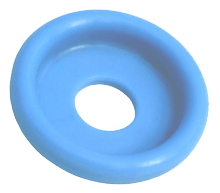Conservative Prolapse Management - Pessary
What is a Pelvic Prolapse?
Pelvic organ prolapse is a common condition, particularly affecting older women. Prolapse literally means ‘to fall’ and it occurs when the structures designed to keep organs in place weaken or stretch so that one or more pelvic organs (the uterus, bladder, bowel or rectum) start to slip out of place.
Causes of a Pelvic Prolapse
It is the pelvic floor muscles and supporting ligaments that keep the pelvic organs in their proper position. The pelvic floor muscles may become weakened for many reasons, such as pregnancy and childbirth, ageing, heavy lifting, obesity, chronic straining, surgery or injury.
Types of Prolapse
As with many conditions, the prolapse maybe
- mild,
- moderate or
- severe
There are a range of management options and some do not require surgery
Conservative Treatment using Pessaries
Pessaries are a non-surgical treatment option for pelvic organ prolapse.
What are Pessaries?
Pessaries are devices that support the collapsed walls of the vagina, and the prolapsed organs (bladder, bowel and/or uterus).
A therapeutic pessary is a removable medical device similar to the outer ring of a diaphragm and it is placed high within the vagina. They are available in a wide range of shapes, sizes and designs.
Benefits of Pessaries
Women may use a support pessary for a number of reasons including:
- Avoid or delay prolapse surgery
- Allow exercise with a prolapse
- Manage stress incontinence
- Help during pelvic floor muscle rehabilitation
Other Reasons for Pessaries
For many women with or affected pelvic floor muscles pessaries may help:
- During pregnancy or following childbirth
- When unsuitable for pelvic prolapse surgery
- Previous failed prolapse surgery
- To support the possibility of future pregnancy
With advanced age, it may be worth discussing with your general practitioner as a possible management option if this applies to you.


